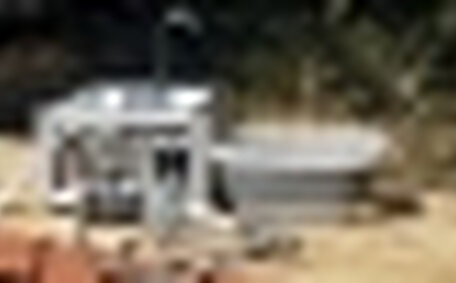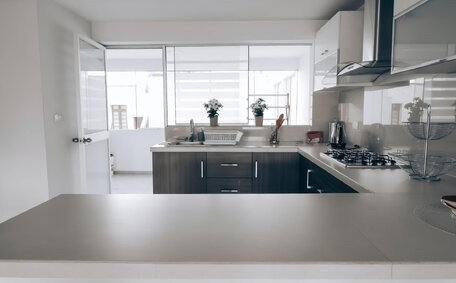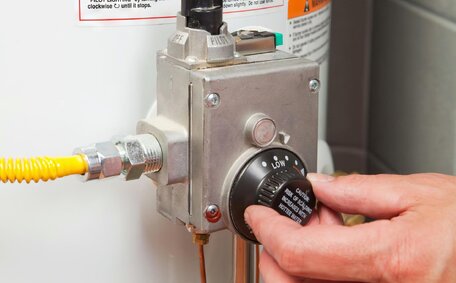Introduction to Blocked Drains and How They Affect Water Pressure
Blocked drains are a primary reason for diminished water pressure in homes, leading to a less forceful water flow. When drainage pipes become obstructed by materials like debris and grease, they restrict wastewater flow and impede proper drainage. Such accumulations foster bacterial growth, placing additional stress on pipes and fixtures.
Accumulated debris can exacerbate pressure issues, potentially leading to complete blockages in sewer lines and pipes. Blockages risk causing leaks, damaging pipes, and ensuing property damage like burst joints.
Blocked drains halt wastewater drainage and create back pressure in the plumbing system.
Blocked drains, whether partial or complete, hinder smooth water flow into homes. Since your household water supply, whether from a municipal source or a private well, as well as proper drainage, are all interconnected, a disruption to one aspect throws off the pressure your home’s plumbing system manages. Experiencing low water flow can lead to fluctuations in the water pressure your home experiences, along with reduced availability from the main water supply.
Drain problems may manifest as foul odours and backed-up sinks or toilets, which homeowners might mistakenly attribute to high water pressure. A clogged drain can cause leaks that necessitate contacting a local plumber for drain cleaning and inspections for root damage or pipe failure.
Promptly addressing a developing clog can prevent severe issues and prolong the health of the plumbing system.
What Causes Blocked Drains and How Do They Develop
Various factors contribute to low water pressure from blocked drains, which allow debris and other materials to gather:
- Pipe damage - Cracks, displaced joints, blockages, and corrosion can all obstruct water flow and provide places for waste, soap scum, and mineral deposits to collect.
- Tree root intrusions - Roots grow towards sources of water and nutrients. Over years, they can take hold and grow extensive root networks that invade and break drains.
- Buildup of debris - Fats, oils, grease, food scraps, hair, and other debris washed down the drain can stick to pipe walls and harden. Over time, layers can easily amass and narrow drain openings.
- Heavy rainfall - Intense storms can overload drainage capacity, and a blocked drain can cause Significant water to back up. This backup can dislodge debris, potentially damaging pipes and creating extensive clog points.
As deposits fill drains, water flow decreases, potentially leading to stagnant water and complete blockages. Pooled water can reduce water pressure and encourage the growth of mould, algae, and bacteria within your drainage system. Left unresolved, backups spread through connected plumbing fixtures while pressure fluctuates systemwide.
Catching and clearing minor clogs promptly is key to prevent future severe blockages. In some cases, especially for severe or recurring issues, it is advisable to assess the drainage lines running through your house’s perimeter to identify any problem your system is facing. Opt for professional drain cleaning, repairs, and hydrojetting services over ineffective DIY methods.
Pipe damage - Cracks, displaced joints, blockages, and corrosion can all obstruct water flow and provide places for waste, soap scum, and mineral deposits to collect.Pipe Damage
Over time, wear and tear can accumulate in your pipes, causing them to weaken and sustain damage. Cracks, displaced joints, blockages, and corrosion are common issues that interrupt water flow and drainage.
Look out for these indicators which suggest potential pipe damage:
- Visible cracks or leaks
- Loud banging noises when water runs
- Sections of burst or collapsed piping
- Discoloured water from rust, sediment, or waste buildup
Even small damaged areas provide places where debris, grease, and mineral deposits readily accumulate. Partial obstructions then quickly evolve into more extensive clogging issues.
While pipes require eventual replacement, early repairs prevent further deterioration. A professional plumber can repair damaged pipes, clear blockages, and assess the system’s health to identify any underlying concerns.
Debris Buildup
Small debris particles, over time, can amass and harden within pipes causing major blockages. Food scraps, grease, hair, and scrapings from soap and bodily grime, over time can amass in household drains.
Grease lining the pipes can merge with waste like food particles, hair, and soap scum, forming significant clogs. The sticky substance acts like glue, forming bottlenecks. Waste feeding from outlets like sinks, baths, washing machines, and dishwashers flows into these obstructed sections and cannot pass.
Outdoors, tree debris can accumulate in exterior drainage during storms, impacting the water in your outdoor pipes and causing a blocked sewer mainline.
To minimise debris, make sure to avoid sending water down your drain with fats and always install strainers. On a monthly basis, flush pipes by running hot water mixed with baking soda and vinegar. Overflows during storms indicate a need for stormwater system inspection and cleaning.
Tree Root Intrusions
Tree roots are among the most common causes of blocked drains as they actively seek out sources of water and nutrients. Over time, tree roots can invade cracks or compromised joints in your sewer pipes. Once taking hold, root masses expand and severely obstruct drainage flow.
As roots grow in hard water areas, they mangle and fracture drain lines. Dense root clusters can fully clog sections of piping, causing waste to back up and hinder proper drainage.
Warning signs of root intrusion include:
- Slow draining water
- Standing water around pipe joints
- Aboveground root masses along the pipe route
Chemical root treatments provide short-term relief but don’t resolve root intrusions or repair pipe leaks completely. For ongoing root invasions and backups, hydrojetting or using a drain snake to clear the lines is necessary. Regular camera inspections also help detect intrusions before major blockages occur.
Signs Your Drains Are Blocked and Affecting Water Pressure
Multiple indicators suggest blocked drains are compromising your property’s water pressure:
- Slow or backed up drainage - Sinks, tubs, and toilets drain slowly or not at all as water struggles to pass clogged pipes.
- Gurgling sounds - Loud gurgling from drains suggests trapped water air bubbles attempting to navigate past a partial blockage.
- Foul odours - Bad smells emanating from drains indicate waste buildup and potential sewer gas leaks.
- Discoloured water - Grey or brown water suggests waste pollution in pipes which can spread into clean water lines.
- Reduced flow at fixtures - Showers, taps and appliances have decreased outlet pressure due to restricted supply.
- Fluctuating temperatures within your hot water system - Blockages disrupt your hot water system, causing unstable or sudden temperature shifts.
These symptoms warrant immediate attention to the drainage systems, including the shut-off valve – vital conduits for water supply. Begin with DIY cleaning methods such as plunging, flushing with hot water, or using enzymatic drain cleaners. If you’re facing persistent issues or suspect leaks, main sewer clogs, root intrusions, or pipe damage, engaging a plumber promptly is essential to avert backups and maintain water pressure.
How Blocked Drains Can Lead to Burst Pipes and Serious Issues
Blocked drains exert substantial stress on plumbing systems, potentially leading to burst pipes and considerable water damage if not addressed swiftly. As clogs worsen, creating high water levels, sewer drain flow reduces which can affect your water pipes while weight and pressure builds up behind the obstruction. This persistent strain from low water pressure can also buckle pipes, detach joints, and compromise residential water lines.
A restricted flow in the main sewer line can be especially problematic, as it can imbalance your water pressure relative to the utility supply with wastewater drainage.
Since the blockage prevents water from draining properly, excess pressure presses against pipes and can overpower their tolerance. Materials like PVC, copper, cast iron, galvanised steel, and clay in pipes are all susceptible to cracking under such force.
Burst sewer lines then leak sewage that floods your homes, threatens health, and necessitates emergency repairs. Other repercussions such as mould infesting walls and floors, erosion under flooring, and contaminated drinking water can also stem from overflow discharge.
Maintain plumbing systems at 350 to 550 kPa with a pressure regulator, as per Sydney Water standards, to help prevent pipe failures. Persistent low pressure, fluctuations, or strange noisessignal blocked drainage requiring urgent professional hydrojetting, repairs, or replacement.
Professional vs DIY Drain Clearing
Plumbers use industrial-grade hydrojetters and augers to scour pipes and break up leaks to also be repaired.
However, for more persistent blockages, what a licensed plumber can do may be essential after basic plunging, hot water flushing, or enzyme drain cleaning attempts. It’s crucial to exercise care and ensure that over-application of chemical cleaners, which can do significant harm, is avoided, nor to put excess strain on fragile fixture pipes is essential.
For recurrent backups, extensive sewer clogs not resolving with multiple DIY attempts, suspect tree root infiltrations, or any signs of leaking, make the call for guaranteed removal. Avoid homemade drain-snaking that could scratch pipes. Ultimately, balancing cost, severity and risk helps determine the best solution.
Preventing Blocked Drains to Maintain Water Pressure
Preventing blockages in your drain is crucial to maintain consistent water pressure and avoid potential burst pipes or backups. Avoid pouring fats, oils, and food waste directly down sinks or toilets where it can accumulate in your pipes, flushing them out your system. Install sink strainers, collect food scraps, and wipe excess grease from plates and pans.
Start by taking a moment to carefully think about every drop and scrap that goes down your drain.
Also, on a regular basis flush drains to keep pipes clear. Once a month, run hot water mixed with baking soda and vinegar down sinks, tubs, and showers to dissolve minor buildups. Consider using enzyme drain cleaners or biological additives to break down organics and control odours.
Check your water meter and exterior drainage grates and gutters seasonally. Clear accumulated leaf litter and debris to prevent stormwater runoff from flooding drains. If confronted with extensive root intrusions or pipe damage, engaging professionals who can provide services such as hydrojetting and utilising a drain snake to clear obstructions can restore long-term unrestricted drainage.
When to Call a Professional Plumber
Seeking professional help and examining key installations like the stop tap and check your water meter are steps crucial for addressing persistent, recurring, or severe blockages that home solutions cannot resolve. When you’re experiencing low water discharge efficiency, it signals the need for a plumber’s expertise and may include these indicators:
- Backed-up sinks, tubs, or showers failing to clear after plunging and hot water treatments can result in low water pressure your household experiences
- Foul odours coming from drains even after using drain cleaners
- Leaking pipes or visibly damaged drainage lines
- Reduced water flow rate and pressure loss affecting the plumbing pressure system within your house
- Suspected main sewer clogs not alleviating after chemical treatments or snaking attempts
Entrust your plumbing needs to our team at Riverwood Plumbing for top-notch services that ensure a full restoration of your water supply systems, complete with thorough pipe inspections, professional hydrojetting, root removal, and meticulous repairs. Our licenced technicians respond promptly 24/7 to get your water flowing freely and pipes cleared completely.






